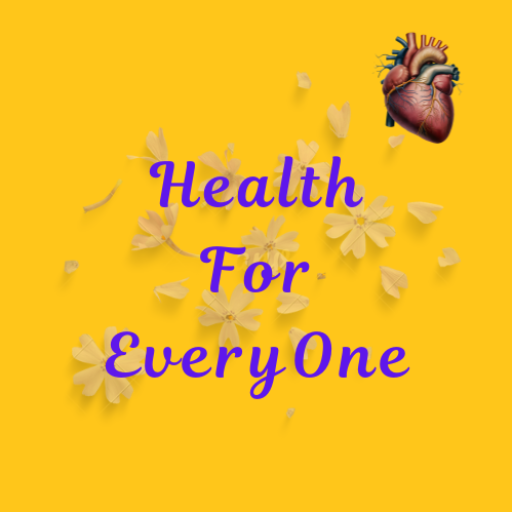Human Immunodeficiency Virus (HIV) is one of the most pressing health challenges in the modern world. Despite significant advancements in treatment and prevention, the stigma and misinformation surrounding HIV persist, hindering efforts to curb its spread. Raising awareness about HIV is vital for reducing infections, improving the quality of life for those living with the virus, and creating an informed and supportive society.
In this article, we delve into the importance of HIV awareness, common misconceptions, modes of transmission, prevention strategies, and how society can support those living with HIV.
Understanding HIV: What Is It?
HIV is an infection that goes after the body’s resistant framework, explicitly the CD4 cells (Lymphocytes), which are essential for battling diseases.If left untreated, HIV can lead to Acquired Immunodeficiency Syndrome (AIDS), a severe stage of the virus where the immune system becomes severely compromised.
While there is no cure for HIV, advances in medical science have made it a manageable condition. Antiretroviral therapy (ART) can suppress the virus to undetectable levels, preventing progression to AIDS and reducing the risk of transmission to others.

Common Misconceptions About HIV.
Falsehood energizes disgrace and oppression individuals living with HIV. Here are a few normal fantasies and the insights behind them :
1.Myth: HIV Only Affects Certain Groups
2.Truth: Anyone can contract HIV regardless of age, gender, sexual orientation, or socioeconomic status. Certain behaviors, not identities, increase risk.
3.Myth: HIV Can Be transferred Through Casual Contact
4.Truth: HIV is not spread through hugging, shaking hands, sharing food, or mosquito bites. It is transmitted through specific bodily fluids such as blood, semen, vaginal fluids, rectal fluids, and breast milk.
5.Myth: An HIV Diagnosis is a Death Sentence
6.Truth: With proper treatment, people with HIV can lead long, healthy lives. Early diagnosis and adherence to ART are key.
Modes of HIV Transmission.
Understanding how HIV is transmitted is critical for prevention. The primary routes of transmission include:
●Unprotected Sexual Contact: Engaging in vaginal, anal, or oral sex without using protection, such as condoms, is the most common way HIV spreads.
●Sharing Needles or Syringes: Injecting drugs with shared equipment increases the risk of exposure to infected blood.

●Mother-to-Child Transmission: Without preventive measures an HIV-positive mother can transfer HIV- virus to her children by pregnancy, childbirth, or breastfeeding.
●Blood Transfusions and Organ Transplants: While rare in countries with rigorous screening protocols, contaminated blood can transmit HIV.
●Occupational Exposure: Healthcare workers may exposed to HIV through accidental needle sticks or contact with infected fluids.
Prevention Strategies.
Preventing HIV is a multifaceted approach that requires individual responsibility and community action. Key prevention strategies include:
1.Safe Sexual Practices
●Use condoms reliably and accurately during each sexual experience.
●Consider pre-exposure prophylaxis (PEP) if at high risk. PEP is a day to day pill that essentially diminishes the possibility contracting HIV.
2.Regular Testing
Early detection is vital for treatment and preventing transmission. Regular testing is recommended for sexually active individuals, especially those with multiple partners or those engaging in high-risk behaviors.
3.Avoid Sharing Needles
For people who inject drugs, using clean needles and syringes is crucial. Needle exchange programs and harm reduction services can further reduce risks.
4.Mother-to-Child Prevention
HIV-positive pregnant women can take antiretroviral medications to minimize the risk of transmitting the virus to their children.
5.Post-exposure prophylaxis (PEP)
If exposed to HIV, taking PEP within 72 hours can reduce the likelihood of infection. PEP involves a 28-day course of antiretroviral drugs.
The Role of Education in HIV Awareness.
Through education people can do following,
·Awareness Campaigns: Educating people about safe practices, such as using condoms, not sharing needles, and regular testing.
·Destigmatizing Conversations: Encouraging empathy and understanding to reduce discrimination against those living with HIV/AIDS.
·Access to Treatment: Promoting widespread access to ART and preventive measures like Pre-exposure Prophylaxis (PEP)

Combating Stigma: A Social Responsibility.
Shame and oppression individuals living with HIV frequently come from obliviousness and dread. This can lead to isolation, mental health challenges, and reluctance to seek care.

To combat stigma:
●Promote Empathy: Encourage understanding that HIV is a medical condition, not a moral failing.
●Share Stories: Personal narratives from people living with HIV can humanize the issue and inspire change.
●Challenge Stereotypes: Advocate for inclusive policies and media representations to dismantle harmful stereotypes.
Living with HIV: A Message of Hope
For those living with HIV, advances in treatment mean the virus no longer defines one’s life. With adherence to ART, individuals can suppress the virus to undetectable levels, making it untransmittable to others—a concept known as U=U (Undetectable = Untransmittable).
Support networks, mental health resources, and community organizations provide essential assistance to improve quality of life. Empowering individuals with HIV to live openly and confidently is key to breaking down societal barriers.
The Global Fight Against HIV.
Globally, efforts to end HIV/AIDS have gained momentum through initiatives such as UNAIDS’ 95-95-95 targets, aiming for:
●95% of individuals with HIV know their status.
●95% of those diagnosed received sustained treatment.
●95% of those on treatment achieve viral suppression.
These goals underscore the importance of collaboration among governments, healthcare providers, non-profits, and individuals in combating the epidemic.
Conclusion: Take Action Today.
HIV awareness is more than just knowledge; it’s about fostering a culture of compassion, action, and support. By breaking down stigma, promoting prevention, and advocating for equitable access to healthcare, we can move closer to a world free from HIV/AIDS.
Take the first step—educate yourself and others, get tested, and be an ally to those living with HIV. Together, we can build a society where HIV is not just manageable but ultimately eradicated.
33°46’08.9″N 72°20’42.6″E


